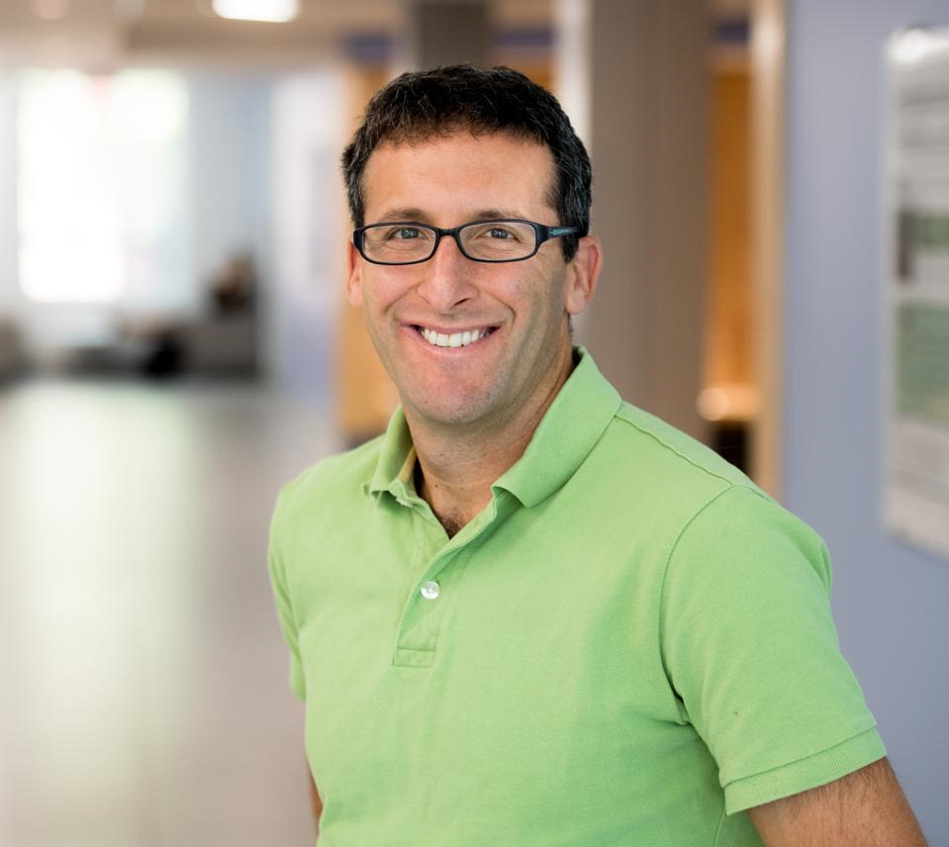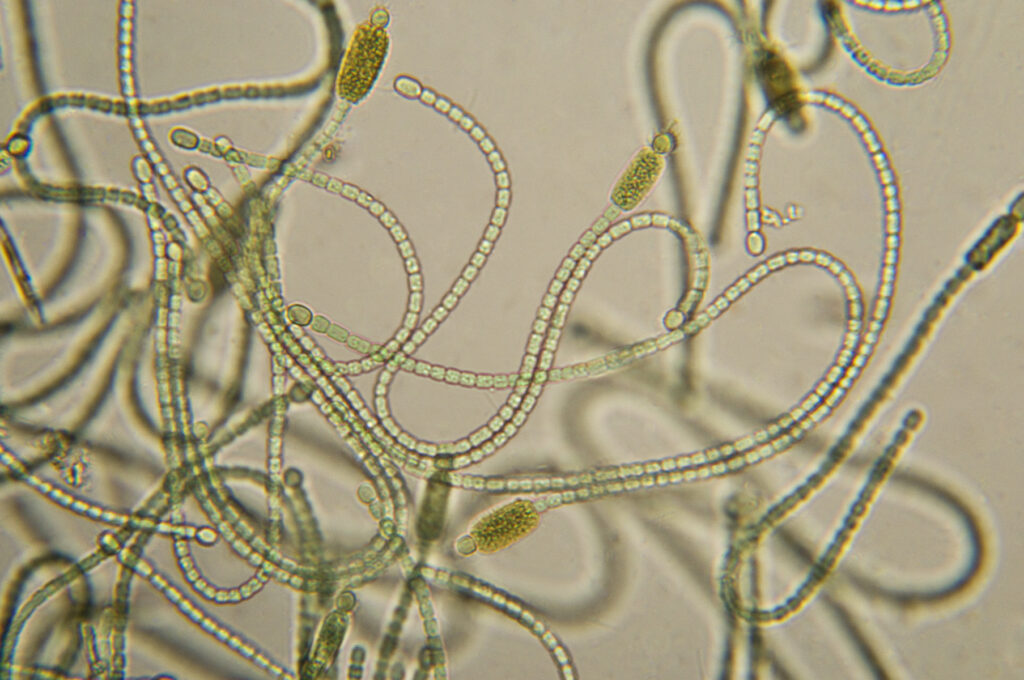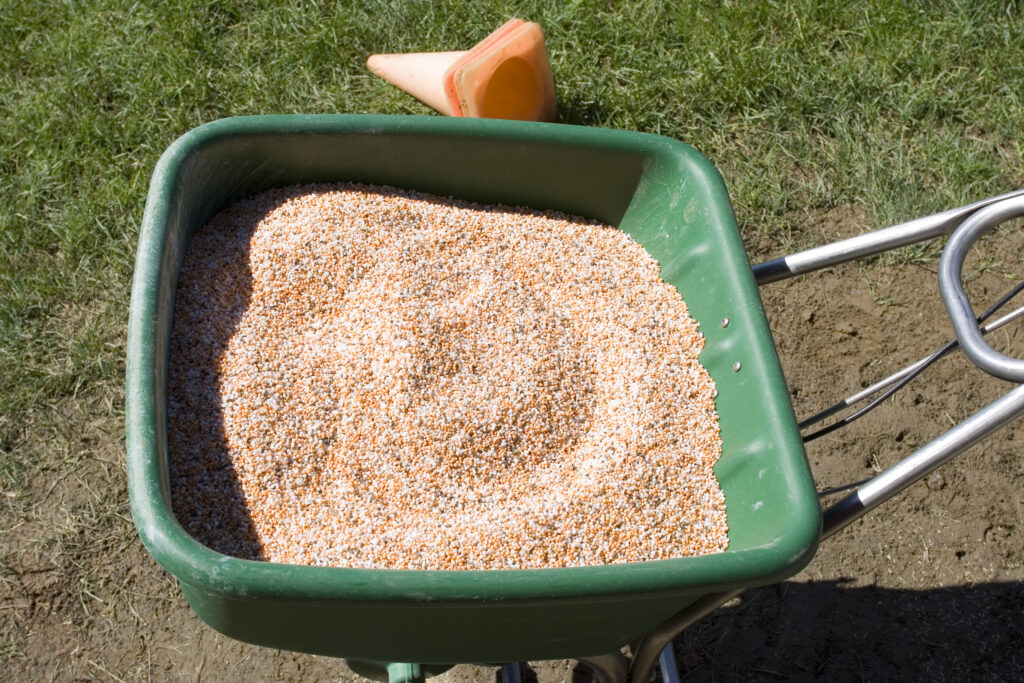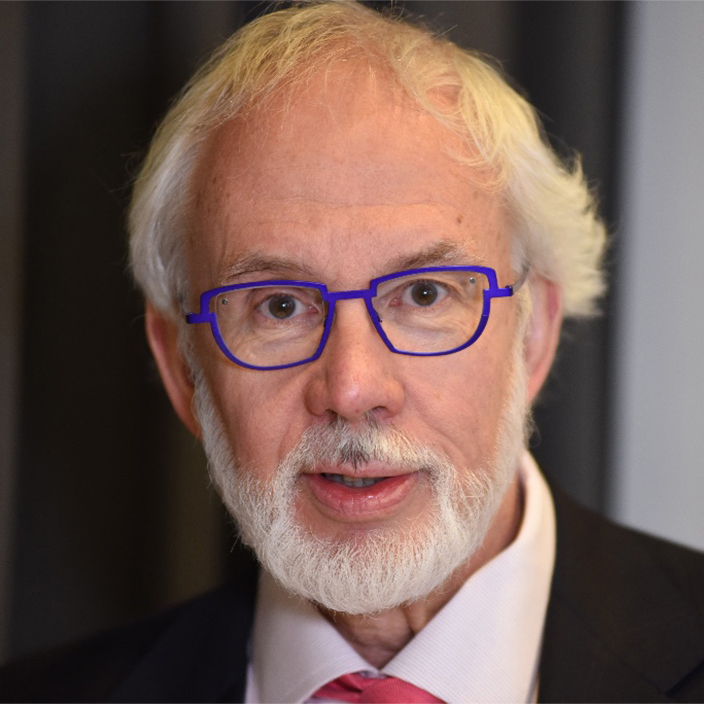A Conversation With Professor Stephen Porder About Climate Change, and How Understanding the Deep Geologic Past Can Pave the Way for a More Sustainable Future
Professor Stephen Porder introduced himself to me on LinkedIn after he read my piece “What I’ve Learned From Conservatives Addressing The Challenge Of Climate Change.” Professor Porder said he agreed with this approach, and would I be interested in working together? I was intrigued to get a message from a scientist, and we set up a call. We had a wide-ranging conversation about geology, politics, and his field of “biogeochemistry”, which was new to me. He had ideas about climate and sustainability I’d never heard before, so I read his new, excellent book “Elemental: How Five Elements Changed Earth’s Past and Will Shape Our Future.” I thought his ideas would be useful to get into the world I live in, companies and investors, so we set up an interview.

Acacia Professor of Ecology, Evolution, and Organismal Biology and Environment and Society, Associate Provost for Sustainability
Eccles: Stephen, thanks for taking the time. For starters, tell me a bit about your background.
Porder: I grew up in New York City and developed a love for the outdoors in Vermont and New Brunswick, Canada. After graduating from an international high school, I went to Amherst College, majored in history, and wrote my senior thesis on Vermont during its 14 years as an independent republic (1777-1791). I ski bummed after sophomore year, and when I came back, I happened into Intro to Geology. I was hooked! It was the first course that taught me to look at the natural world in a fundamentally different way. I ended up sort of a half history/half geo kid. I wasn’t sure what I wanted to do after graduation, so I taught skiing, did odd jobs, and pondered.
Eccles: Historian to ski bum to scientist! How did that happen?
Porder: I went back to get a M.S. in geology from the University of Montana in 1997 and spent the next three years teaching high school earth science in New York. Finally, I stumbled across my current field, through two great popular science books: The Beak of the Finch by Jonathan Weiner and The Song of the Dodo by David Quamann. They introduced me to the idea that science could help understand our environment in ways I never imagined, and that you could do that science outdoors! In 2000 I started my Ph.D. in Ecology at Stanford University, studying landscape and ecosystem development in the Hawai’i, and stayed on for a postdoc doing similar things in the Geology Department.
Eccles: Geology, then biology, then geology again?
Porder: Yeah, my work is definitely on the border. I joined the Ecology faculty at Brown in 2007 and spent the first 15 years of my career working on tropical rainforests, agriculture, and restoration. Over the years, though, I came to feel that doing only basic research in the era of climate change was like rearranging deck chairs on the Titanic. I needed to get more involved in solutions.
To this end I started helping with Brown’s plan to reduce its own carbon emissions. In 2018 I was appointed as the university’s, and the country’s, first Associate Provost for Sustainability. In this role, I guide our sustainability efforts, and focus a lot on emissions reductions among other goals.
Eccles: Thanks for the background. As I mentioned in our last conversation, I think you bring a different point of view to the scientific discussion of climate change, so I’d like to start there.
Porder: A good place to start is to recognize that humans are not totally unique in their effects on the planet. A few organisms that preceded us also kickstarted massive environmental changes. My book “Elemental” explores how understanding our similarities and differences can help chart a course to a more sustainable future.
Eccles: Can you unpack that a little?
Porder: Big, life-driven changes to the planet are rare. They’ve happened only a few times in Earth’s four and a half billion-year history. What’s fascinating, and relevant to our present environmental challenges, is that the way these changes happen are remarkably similar over those billions of years. Simply put, when an organism evolves new ways to get energy and food, they can change the world.

Cyanobacterium, Algae, Heterocyst, Magnification, Plant Cell (Photo: iStock)
Eccles: The first example you write about is fascinating. It’s about an organism I never heard of – the cyanobacteria.
Porder: Probably very few people have heard them! But this vast group of water-borne organisms are responsible for about a quarter of all the photosynthesis on Earth! And these small but mighty cyanobacteria created the biggest environmental change of all time some 2.4 billion years ago. They made Earth the only known planet that has breathable oxygen in the air. How did the cyanobacteria pull off this planetary alchemy? They combined a new type of photosynthesis, a way of capturing and using the sun’s energy, with a novel way of making their own fertilizer. This gave them unprecedented access to energy and food, and they wildly proliferated.
Eccles: So how did this impact the climate?
Porder: It’s a bit of a science rabbit hole, but a cool one. That new photosynthesis I just mentioned, the new way of capturing sunlight and carbon, had a waste product – oxygen. Oxygen was of no use to cyanobacteria. It’s actually bad for photosynthesis and the process of making their own fertilizer. So, they just dumped their waste oxygen into their ocean environment. Eventually, enough oxygen accumulated in the water to bubble out into the air. This altered the chemistry of the atmosphere because oxygen destroyed one of the gases keeping the planet warm.
Eccles: Greenhouse gas? Like carbon dioxide?
Porder: Right idea, wrong gas. Back then, the most important greenhouse gas was methane. But methane is consumed by oxygen. So, the cyanobacteria’s waste product – oxygen – eventually destroyed the methane that was keeping the planet warm enough to be unfrozen and “accidentally” plunged the planet into a near-global ice age. It was good for all the organisms, us included, who now rely on this oxygen to live. But at the time it was an environmental Armageddon.
Eccles: Wow! Now please explain the analogy to other living world changers.
Porder: Well, it turns out that the other world changers of the deep past, the land plants, also figured out how to get unprecedented amounts of energy and “fertilizer,” and they too drastically changed the climate. But that’s a story for another day because we’re here to talk about humans.
Eccles: Ok, I’ll bite. What about humans?

Textured, Textured Effect, Coal, Rock – Object, Black Color (Photo: iStock)
Porder: We’ve found and exploited a “new” source of energy in fossil fuels—quotes because coal, gas, and oil are simply the concentrated sunlight energy captured by ancient living things. Humans also make our own fertilizer, using fossil fuels to pull it from the air and mine it out of rocks. Not surprisingly, unprecedented access to energy and food has allowed us to wildly proliferate. And also not surprisingly, given our world changing predecessors, our waste products are changing the Earth’s climate.
Eccles: Interesting, albeit a little depressing, to see our commonalities with cyanobacteria and the plants. But let’s dig into the weeds (so to speak) and talk a bit about the five elements you discuss in your book.
Porder: Our world is incredibly diverse—millions of species from bacteria to blue whales. But every single living cell is built from the same five elements. In order of abundance: hydrogen, oxygen, carbon, nitrogen and phosphorus (HOCNP). My editor wisely vetoed it as a book title, but HOCNP is “life’s formula.” Every species must gather these elements (and a few more) from their environment in order to live. Plants use sunlight energy and water to capture carbon from the air and use that captured carbon to grow roots that gather water, nitrogen, and phosphorus from the soil. Animals get these elements from eating plants (or other animals) and drinking water. All life is a relentless quest for HOCNP.
Eccles: Fascinating. You know I’m especially intrigued by phosphorous because I’ve never thought about it until I read your book.
Porder: I confess it’s my favorite, though I probably shouldn’t play favorites. Humans get it by mining ore deposits, most of which are in northwest Africa and use that P as fertilizer. It (along with nitrogen) lets us to grow enough food to feed our skyrocketing population.

Fertilizer, Yard – Grounds, Nitrogen, Grass, Color Image (Photo: iStock)
Eccles: But your book says we’re not the first to exploit phosphorus – it was a key for land plants as well?
Porder: That’s right. Land plants solved two key challenges imposed by life’s formula when they evolved roots. First, they used those roots to pull water from the soil, which allowed them to get H and O (in water) on land. Second, roots and the fungi they partner with, are incredibly good at mining for phosphorus in rocks and soil. These evolutionary leaps allowed plants to spread across the continents, but in so doing their photosynthesis pulled a LOT of carbon dioxide out of the air. Reducing CO2 in the air cools the planet, just like putting more in the air warms it. After about 100 million years, plants pulled so much CO2 out they took the planet from a global hothouse to an ice age and caused a mass extinction.
Eccles: Ok – geology is fascinating – but let’s talk about us. What we think of as “modern” human civilization has been around for about 10,000 years, not millions or billions.
Porder: It is the blink of an eye. We are unprecedented in the pace of the change we are driving, even if we share elemental methods with our world changing predecessors. We are a geologic force moving at the speed of life. That’s unique and, honestly, scary.
Eccles: You focus a lot on what individual people and organizations should actually do about climate change. What should our priorities be?
Porder: We need wise management of life’s formula. For over a century, we’ve burned fossil fuels to get energy, and that energy raised people out of poverty, improved medicine, and created enough fertilizer to grow food for 8 billion people. But we’ve ignored the byproducts, the CO2 from burning fossil fuels and the fertilizer runoff from our farms. Those byproducts now threaten the foundations of our success. Fortunately, we have a way out. We can get our energy and food without so many unintended consequences.
Eccles: Ok, I’m intrigued. Please explain.
Porder: Well, let’s start with the elephant in the room – climate change. About ¾ of the problem is caused by burning fossil fuels. Why do we do burn them? We want their energy to power our society. In my home state of Rhode Island, for example, almost 90% of our emissions come from the combination of electricity generation, transportation, and building heating. Like the cyanobacteria and the plants, we want the energy, not the waste. Fortunately we, unlike our predecessors, can decouple them. We’ve can get energy without burning stuff – using wind, solar, hydro, nuclear, and electric and heat storage. We can electrify our transport and building heating and eliminate emissions of CO2. We don’t know 100% how to do this 100% of the time, but we’re getting close, and we know more than enough to transition faster than we are.

Building Exterior, Built Structure, Color Image, Compressor, Concepts (Photo: iStock)
Eccles: That all sounds good, but let’s put some real numbers on this for context. We moved about a year ago and converted our house to heat pumps, the electricity-driven heating you advocate for. It cost us $40,000 (less $10,000 for the town rebate) plus another $30,000 or so to upgrade our wiring and electric panel. Not everyone can afford these transitions.
Porder: Fair enough; retrofitting old New England houses to add heat pumps and ditch the furnace is expensive, and not everyone can afford it. But the next time your need to replace your AC, you can replace it with a heat pump at virtually no extra cost. It will provide more efficient cooling in the summer and heat your house on all but the coldest days. This heating will be cheaper than an oil furnace, and about the same cost as gas. For new-build construction heat pumps are at cost parity with furnaces and require no maintenance to speak of. That’s why heat pumps have outsold furnaces in the U.S. the last two years.
Eccles: EVs are also more expensive, so same question.
Porder: EVs aren’t quite at cost parity in the U.S. yet but will be soon. In 2005, many of us thought we still needed landlines. It soon became clear we didn’t. Similarly, some think EVs are a distant thing, they’re not ready. But peak sales of purely gas cars (with no battery to provide either some or all of the energy) was in 2017, and by next year or the year after EVs will be cheaper up front (their lifetime costs are already cheaper). Internal combustion will be around for a while. People still ride horses too. But I think we’ve already heard the death knell of gas cars.
Eccles: Okay. So carbon solutions are coming, or already here. But you say we need to manage all life’s essential elements. What about the others?

Tractor, Agriculture, Fertilizer, Agricultural Field, Crop Sprayer (Photo: iStock)
Porder: Nitrogen and phosphorus are tricky. Unlike carbon-based fossil fuels, which can be replaced with other sources of energy, we will always need nitrogen and phosphorus; that’s baked into our biology and the biology of all living things. But most of the issues around nitrogen and phosphorus have to do with their use as fertilizer. We dump a lot on our farms, and it doesn’t stay there, it spills into waterways, leaches into groundwater, and causes a cascade of problems. But we’re making progress. People are innovating ways to keep fertilizer where we want it, and to use less without hurting food production. Cows, all 1.7 billion of them, are the biggest nutrient users on the planet. But in the next couple of decades we may well replace this ancient, inefficient meat production technology with something better (I stole the phrase “meat production technology” from Pat Brown, the founder of Impossible Foods).
Eccles: Progress on all fronts, but a long way to go. I do think the Doomsday Crowd isn’t helping the cause. Your book paints a pretty dire picture but is ultimately somewhat optimistic, so what’s your take?
Porder: No question about the magnitude and urgency of the situation, but I’m pretty optimistic, and agree we don’t do much good by relentlessly harping on the negative. Ten years ago, if you had asked me how much warmer the planet would be by the time my teen-aged daughter is a grandmother, I would have said about 8°F. Now I think that number is likely to be closer to 5°F warmer. Neither number sounds big to the average person; after all a single day sees bigger changes. But those who study climate know that the difference between an ice age and the warm period we’re in now is about 8°F. Shaving off 3°F from our future is a big deal! And I’m convinced we can get that number lower.
Eccles: Because of heat pumps and EVs? Is it that simple?
Porder: There is more good news beyond those examples, and we underestimate how fast we improve. The drop in coal use, and the deployment of renewables, has been faster than expected every year since 2008. Naysayers point out renewables are intermittent, which is true, but we’re solving that too. Southern Australia says they will be running on 100% renewables, all day every day, by 2027 (three years ahead of schedule). Some say we can’t have a strong economy without more emissions, but U.S. GDP went up while emissions went down in 2023, a first other than during COVID. Globally emissions are still rising, but at a rate slower than any time since the end of World War II. We’re making progress.
Eccles: Encouraging but sounds like we’ll end up living in a much warmer world.
Porder: Yes, but there is a big difference between a warmer world and a catastrophically warmer world. Every degree warmer, every 10th of a degree, means more human suffering, so we need to fight like hell. No outcome is guaranteed, but there are millions of smart, motivated people working really hard on this. And whether or not you’re a big fan of capitalism, lots and lots of capital is flowing towards these challenges, with huge economic rewards awaiting the effective innovations. That’s reason for cautious optimism as well, though we all know that capitalism and profit motivation is a double edged sword.
Eccles: Hey, I’m a business school professor and so a big fan of capitalism 🐥. At the same time, it needs sensible regulation to not become unfettered. Any last thoughts?
Porder: Two. First, we humans need to become wise managers of the Earth system. For better and worse, we are managing the flows of life’s essential elements. So far, we’ve managed by neglect. But there is nothing to prevent us from bringing intentionality and purpose to our elemental interventions to build a better future. Second, no one wakes up in the morning wanting to make the world a worse place. Let’s acknowledge that no one has all the answers to these wicked problems and work together to implement reasonable but rapid measures to head off sustainability challenges before they become truly overwhelming. We can do it, but only if we try.
Eccles: Stephen, thanks for taking the time to talk to me. You know I’d love to get your scientific views more part of the climate discussion in the corporate and investment communities.
Porder: Happy to. The more informed we all are, the more effective we’ll be in dealing with the greatest challenges of our challenging century.
SUBSCRIBE TO OUR NEWSLETTER
Subscribe our newsletter to receive the latest news, articles and exclusive podcasts every week

